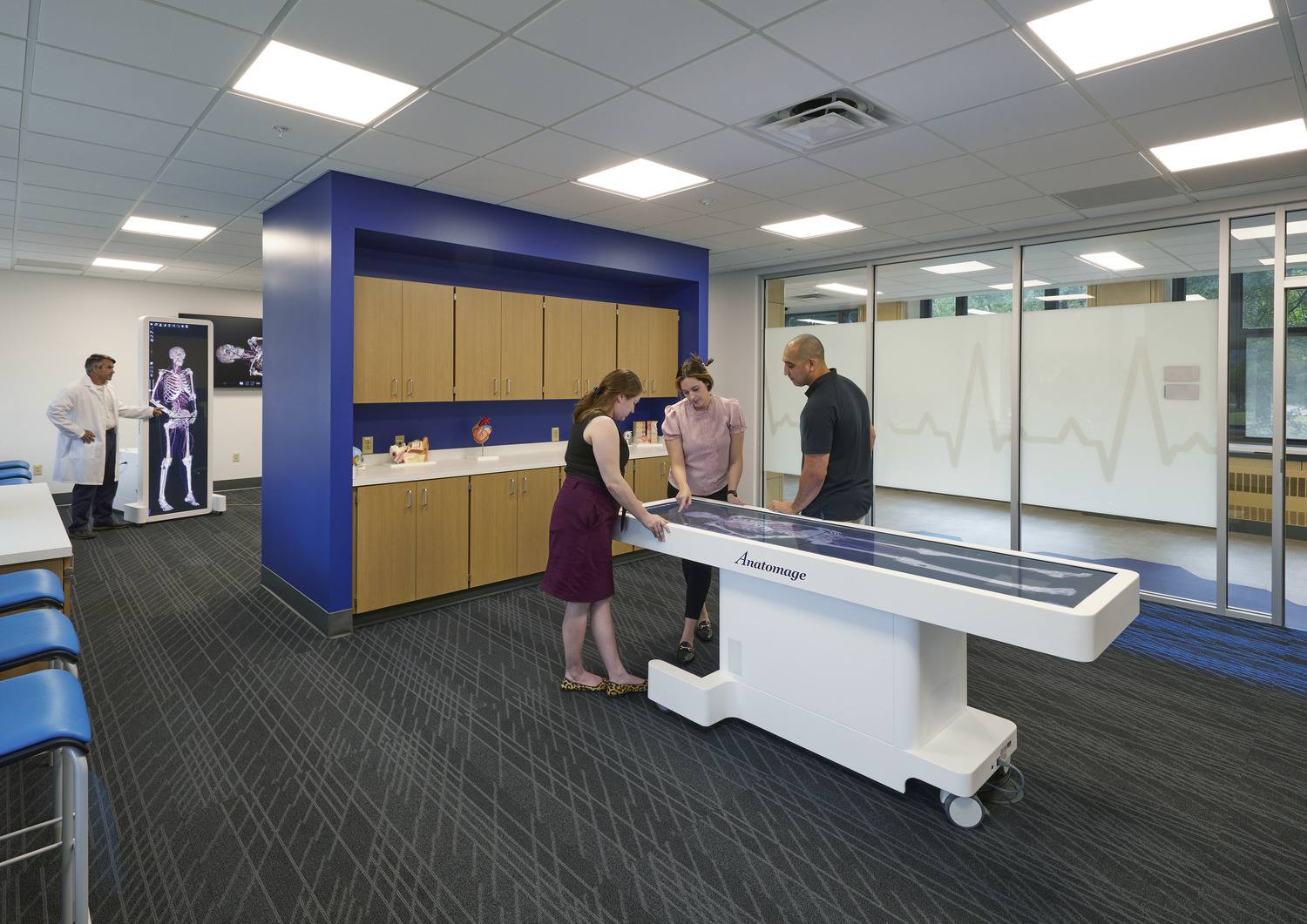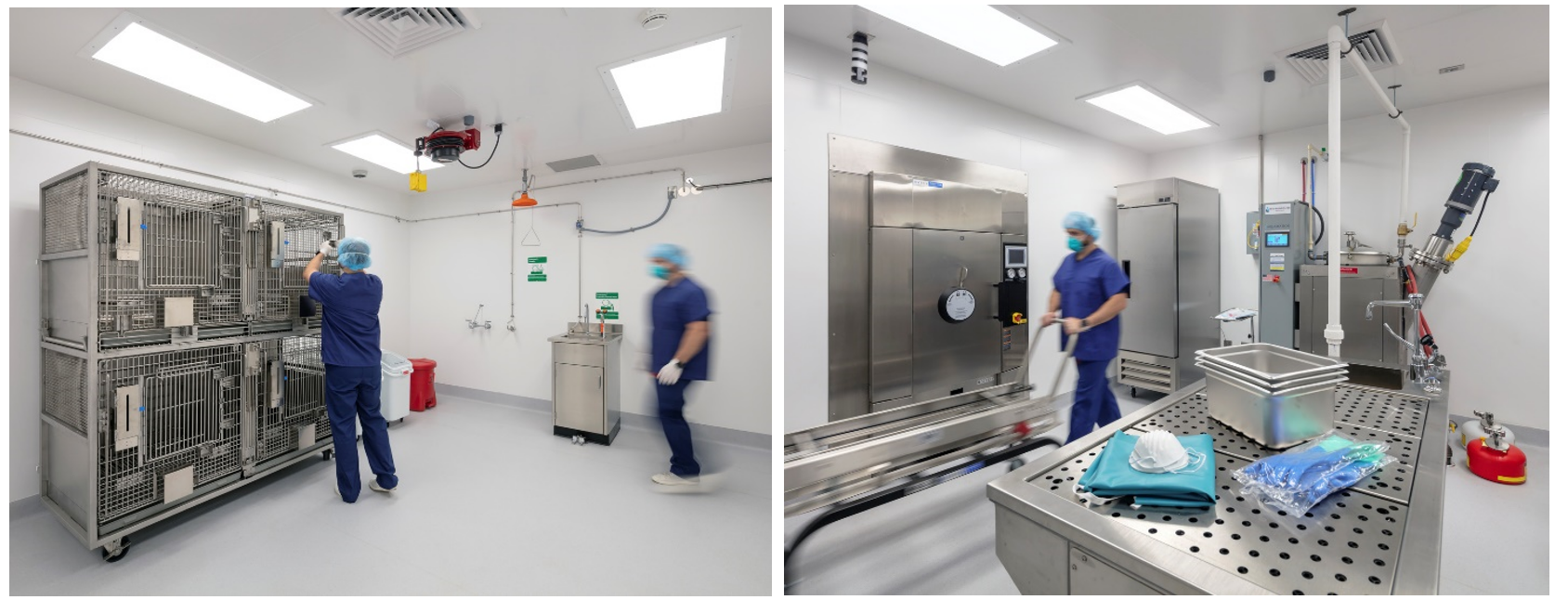Share This Story
The convergence of academia and healthcare has never been more important than in today’s fast-paced medical landscape. As technology advances, so too must the spaces where future clinicians learn and train.
The aftermath of the COVID-19 pandemic heightened the need for health workers worldwide, exacerbating an impending shortage. 100,000 registered nurses have left the profession over the past two years, with an additional 600,000 expected to leave by 2027, according to a National Council of State Boards of Nursing study. Moreover, the Association of American Medical Colleges predicts a significant deficit of anywhere between 54,000 and 140,000 physicians in the U.S. by 2033.
Consequently, colleges and universities are under pressure to revamp health professions curriculums to better prepare students for the workforce. But administrators can capitalize on opportunities to bolster enrollment by employing value-focused design approaches that bridge clinical training and traditional education, resulting in highly collaborative and experiential learning environments.
Emulating Real-World Settings
A key strategy for effective medical education design is to envision spaces that mimic clinical settings. This helps ensure students’ smooth transitions from classroom learning to full-time work, and may involve integrating patient rooms, operating theaters or diagnostic imaging suites, where participants can apply theoretical knowledge to realistic situations in a controlled manner.
Such simulations offer a safety net for them to learn from their mistakes and gain confidence, enriching the academic experience and ultimately leading to superior patient care in the future.

As the student population at the University of Rochester’s School of Nursing burgeoned, the building’s residential dormitories were converted to meet growing demand—with major components including a skills lab, simulation suites with high-fidelity patient simulators and SimIQ assets, experiential learning rooms (ELRs), clinical learning rooms (CLRs) and extended reality workspaces.
Embracing the Latest Technologies
Technology can further enhance simulated learning environments. For example, virtual reality (VR) systems can replicate surgical procedures and medical emergencies, while augmented reality (AR) might be used to project anatomical structures onto real objects.
Other digital elements—like online learning management systems or electronic health records—introduce students to essential tools for their careers, allowing them to hone their documentation skills while gaining knowledge in patient management, medical coding and interdisciplinary communication.
Remote learning also enables access to valuable resources from any location; students can observe doctors at work via screens from different universities or hospitals. Additionally, surgical and procedural theaters are incorporating cameras and “viewing spaces,” enabling live streaming of procedures to elevate cooperation among education and healthcare professionals.

The simulated anatomy laboratory at St. Bonaventure University’s School of Health Professions features two Anatomage tables with life-size displays of the human body, as well as a visualization system and a virtual library of human cadavers. These sophisticated tools champion hands-on interaction, helping students understand disease conditions through the dissection of 3D scans.
Prioritizing Flexibility and Comfort
Medical education has transitioned from didactic lectures to diverse teaching styles—such as group discussions and clinical rotations—necessitating spaces that can accommodate every subject from gastroenterology to cardiology. This malleability is especially critical as doctors work increasingly with peers across disciplines to optimize treatment techniques. Features like charging ports and USB-compatible modular furniture enable easy classroom reconfiguration, supporting curriculum adjustments and additions.
Furthermore, incorporating nearby “flex” areas promotes student comfort, serving as third spaces for interdisciplinary group study, lunch and informal learning, thus reducing the need for campus travel.
These areas not only facilitate academic collaboration but also play a crucial role in promoting health and wellness for students and staff. As they may spend extended periods in the building, having spaces to unplug and relax without leaving the premises is essential. These spaces act as catalysts for student connection, alleviating the stress of demanding coursework after class, and contributing to a greater sense of belonging and well-being.

The ABSL-3 Research Facility at the Atrium Health Wake Forest University School of Medicine was designed with versatility top of mind, incorporating sectional construction and adaptable isolated and centralized decontamination systems. Notably, a holding room for various animal species—such as swine, sheep and non-human primates— can be effortlessly converted to accommodate individually vented cage racks for future rodent studies. These features enable researchers to swiftly adjust to changing research demands without compromising safety or sustainability.
Cultivating Practical Partnerships
Higher education institutions often join forces with regional healthcare networks to provide direct exposure to clinical settings and to share academic space. This strategy serves three main purposes: preparing students for future roles through hands-on learning, creating direct pathways for organizational recruitment and offering ongoing learning and training opportunities. This symbiotic relationship supports industry growth by supplying a steady stream of career-ready professionals who are up-to-date on the latest techniques and approaches, thus boosting the economy.
The comprehensive Union Square Campus―a successful alliance between Cone Health, Guilford Technical Community College, North Carolina A&T State University and the University of North Carolina at Greensboro―exemplifies this tactic. The cross-collaborative training center serves aspiring and established healthcare professionals as a talent pipeline, providing a host of networking avenues for students prior to graduation.
Supercharging Healthcare
With the emergence of the AI Spring and other groundbreaking advancements like robotics, the future of medical education hinges on multifaceted design and seamless tech implementation. This synergy will shape a new generation of agile professionals capable of adapting to—and even influencing—the dynamic healthcare world on a dime.
Colleges and universities can harness these forward-thinking approaches to create more vibrant learning opportunities and establish the infrastructure necessary to sustain them. In doing so, they’ll not only stay ahead of the curve, but boost recruitment, meet industry demands and pave the way for elevated patient outcomes.
